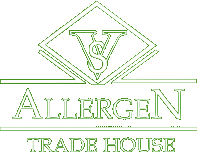|
RUS / ENG
Product info
|
Main page :: Product info ::
Antirabies vaccine
Antirabies vaccineAPPLICATION INSTRUCTIONS For cultural concentrated purified inactivated freez-dried antirabies vaccine and for antirabies immunoglobulinCultural concentrated purified inactivated freez-dried antirabies vaccine (KOKAV) is produced from rabies virus Vnukovo-32 strain that has been grown on primary Syrian hamster kidney cell culture, inactivated with ultraviolet rays and formaldehyde, concentrated and purified with: ultrafiltration with further purification in porous silica, or with ultracentrifugation, or with ion exchange chromatography. The vaccine is stabilized with gelatose and sucrose. The vaccine looks like white hygroscopic porous mass, after re-dissolving it is slightly opalescent colourless solution. Each dose (1.0 ml) contains no less than 2.5 IU.
Immunological properties: The vaccine induces immunity against rabies.
Prescription: Therapeutic and prophylactic immunization.
Administration: Ampoule contents should be dissolved in 1.0 ml of water for injections during no longer than 5 minutes. Dissolved vaccine should be injected slowly and intramuscularly into the deltoid muscle for adults, and into the upper part of haunch for children under 5 years old. Do not inject the vaccine into the buttock. The product must not be administered in case of broken ampoule, illegible labelling, changing of coloration and transparency afrter dissolving, expired shelf life, and incorrect storage. The aseptic measures must be applied while open and administer the vaccine.
Storage term for dissolved vaccine must be no longer than 5 minutes.
A patient should be under medical supervision during 30 minutes since he vaccinated. Vaccination stations should be supplied by antishock remedies. All data about type and series of preparations being used for vaccination as well as the schedule of vaccination and post-vaccination reactions should be fixed in special personal sertificate.
Antirabies treatment consists of d-bridement and antirabies vaccine administration, or simultaneous administration of antirabies immunoglobulin (AIg) and antirabies vaccine (KOKAV).
D-tritment
D-tritment is extremily important and should be conducted immediately or as soon as possible in case of bite or injury. Bite wound should be washed by detergent solution. Wound adges should be cleansed by 70% alcohol or by 5% iodine solution. In case of indications, administer antirabies immunoglobulin (AIg) just before suturing (see Antirabies immunoglobulin (AIg) dosage).
It is needed to avoid suturing as far as possible. Suturing is indicated in the following cases only:
Vast wound – several cuticular sutures;
Cosmetic indications – suturing of face wounds;
Suturing of blood vessels to stop bleeding.
Therapeutic immunization should be started immediately after d-tritment.
Therapeutic immunization
Indications: Contact with or bite by rabid, suspected for rabies or unknown animals.
Contra-indications: Do not exist
Therapeutic immunization scheme: Detailed scheme is placed at the end of the document.
In case of combined treatment both with the vaccine and the immunoglobulin, in accordance with the scheme (p.3) both preparations should be administered simultaneously (first AIg, next KOKAV) and injected into the different locations.
Administer AIg as soon as possible after contact with rabid, suspected for rabies or unknown animals (see Scheme for therapeutic immunization). It must be administered no late than 3 days after the contact. Do not administer AIg after administration of KOKAV.
Antirabies immunoglobulin (AIg) dosage: Heterologous (equine) immunoglobuline dosage is 40 IU per kg of body weight. Homologous (human) immunoglobulon dosage is 20 IU per kg of body weight.
As much as possible AIg should be infiltrated into the tissue around wonder and into the wonder. In case of impossibility to inject the whole dose into wonder due to anatomical peculiarities (finger ends etc.), the rest of the dose should be injected intramascularly (upper part of haunch or shoulder). AIg injection location must be differ from that one for the vaccine.
Check individual susceptibility for equine protein before heterologous AIg injection.
Prophylactic immunization
Indications: Prophylactic immunization is indicated for persons dealing with stray animals, for hunters, veterinaries, foresters, slaughterhouse workers, taxidermists, for those who deal with “street” rabies virus.
Prophylactic immunization scheme
Contra-indications for prophylactic immunization
Reactions on antirabies preparations administration
Neurologic symptoms are rarely registered. In this case the patient must be hospitalized immediately.
Dosage form
Vaccine is produced in set: one ampoules containing 1.0 ml (single dose) of the vaccine and one ampoule containing 1.0 ml of diluent (distilled water for injection). Each box includes 5 sets: 5 ampoules containing the vaccine and 5 ones — with the diluent.
Equine antirabies immunoglobulin is produced in set: one ampoules containing 5.0 ml or 10.0 ml of the preparation and one ampoule containing 1.0 ml of diluted (1:100) immunoglobulin. Each box includes 5 sets.
Shelf life, storage and transportation conditions
Shelf life for the vaccine is 1.5 years. Shelf life for immunoglobulin is 2 years. The vaccine should be stored and transported at temperature from +2 to +8 Celsium. It is possible to transport the vaccine at temperature +25 Celsium during no more than 2 days.
In case of complications or falling sick after or during the complete course of vaccination it is needed notify immediately local Healthcare Administration, Ministry of Health L.A.Tarasevich State Research Institute for Standartisation and Control of Medical and Biological Preparations (GISK), (Sivtsev Vrazhek 41, Moscow 119002 Russia, Tel. +7 495 241 3922), and manufacturer of the vaccine or immunoglobulin. Administration of the particular vaccine series must be rejected. Samples of the vaccine or inmmunoglobulin should be sent to GISK.
In case of vaccinee death it is needed to conduct autopsy and diagnostical study of brain tissues. For this purpose the samples of corps brain tissue (ammon horn, brainstem, cerebellum, cortex) extracted aseptically should be placed in hermetically closed vial with 50% water-glycerin solution, cooled below -20 Celsium and immediately sent to diagnostical laboratory.
Immunization scheme
*Contact means any beats, scratches, abrasions and salivation.
Comments
|



 About us
About us 